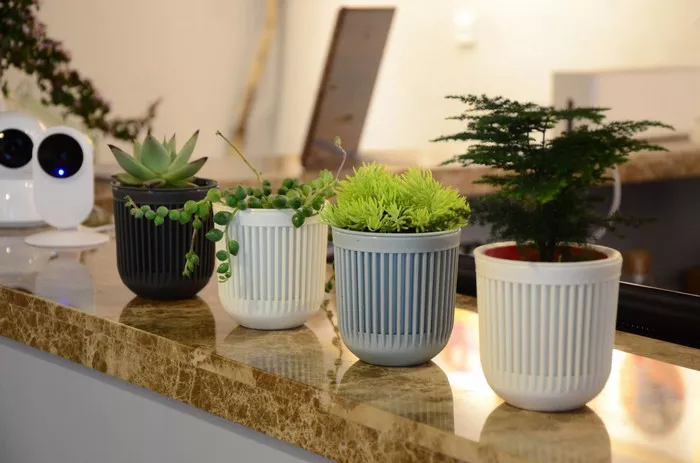Propagation is a rewarding endeavor for any plant enthusiast, offering an opportunity to expand your collection or share greenery with friends. Jade plants (Crassula ovata), known for their resilience and attractive succulent leaves, are particularly popular candidates for propagation due to their ease of care and ability to thrive in various conditions. When it comes to propagating jade plants, two primary methods stand out: water propagation and soil propagation. Each method has its benefits and considerations, making the choice between them an important decision based on your specific needs and preferences.
Understanding Jade Plants
Before delving into propagation methods, it’s beneficial to understand the jade plant itself. Originating from South Africa, jade plants belong to the Crassulaceae family and are characterized by their thick, fleshy leaves and woody stems. These succulents are well-suited to indoor environments and require minimal maintenance, making them ideal for both novice and experienced gardeners alike.
Jade plants are typically propagated from stem or leaf cuttings rather than seeds. This method ensures that the new plants retain the characteristics of the parent plant, such as leaf shape and growth habit. Propagation can rejuvenate an older plant, produce gifts for friends, or simply add more greenery to your living space.
Water Propagation: Step-by-Step Guide
Water propagation involves placing a cutting of the jade plant in water until roots develop. This method is straightforward and allows you to observe root growth easily. Here’s a step-by-step guide to water propagation:
Selecting a Healthy Cutting: Choose a stem cutting that is approximately 2-4 inches long. Ensure the cutting has at least a couple of leaves and is free from any diseases or pests.
Preparing the Cutting: Allow the cutting to callus over for a few days in a dry, shaded location. This helps prevent rotting when the cutting is placed in water.
Placing in Water: Fill a small container with room-temperature water. Place the cutting in the water, ensuring that at least one leaf node is submerged.
Root Development: Place the container in a bright, indirect light location. Change the water every few days to prevent stagnation and bacterial growth.
Transferring to Soil: Once roots are approximately 1-2 inches long, carefully transplant the cutting into well-draining soil. Water lightly and gradually increase watering as the plant establishes itself.
Advantages of Water Propagation
Water propagation offers several advantages:
Visibility: You can easily observe root development.
Accessibility: It requires minimal materials and expertise.
Versatility: Suitable for cuttings that may not have access to soil immediately.
Considerations for Water Propagation
However, there are also considerations to keep in mind:
Root Fragility: Roots developed in water may be more fragile when transferred to soil.
Transition Shock: Plants may experience shock when moved from water to soil.
See Also: What Is the Best Fertilizer for Jade Plants?
Soil Propagation: Step-by-Step Guide
Soil propagation involves planting the cutting directly into soil, where it will develop roots. This method mimics the plant’s natural environment and can lead to quicker establishment. Follow these steps for successful soil propagation:
Choosing a Suitable Cutting: Select a healthy stem cutting as described for water propagation.
Preparing the Soil: Use a well-draining succulent or cactus soil mix. You can also create your own mix using sand, perlite, and potting soil.
Planting the Cutting: Make a small hole in the soil with a pencil or similar tool. Insert the cutting into the hole, ensuring that at least one leaf node is covered by soil.
Watering: Water lightly immediately after planting to settle the soil around the cutting. Avoid overwatering, as jade plants are susceptible to rot.
Caring for the Cutting: Place the pot in a location with bright, indirect light. Water sparingly, allowing the soil to dry out between waterings.
Advantages of Soil Propagation
Soil propagation offers several advantages:
Natural Transition: Roots develop directly in their future growing medium.
Sturdier Roots: Plants often develop stronger roots in soil compared to water.
Immediate Adaptation: There is no need to transition the plant from water to soil.
Considerations for Soil Propagation
However, soil propagation also has considerations:
Less Visibility: Root development is not as easily observed as in water propagation.
Potential Rot: There is a risk of overwatering, leading to root rot.
Choosing the Best Method
The choice between water and soil propagation ultimately depends on your specific needs and preferences:
For Beginners: Water propagation may be preferable due to its simplicity and visibility of root growth.
For Quicker Establishment: Soil propagation may offer faster establishment and sturdier root development.
Based on Availability: Consider the availability of materials and your comfort level with each method.
Conclusion
Whether you choose water propagation or soil propagation, successfully propagating a jade plant can be a gratifying experience. Each method has its strengths and considerations, making them suitable for different situations. By understanding the steps involved and considering your own preferences, you can effectively propagate jade plants and enjoy the rewards of watching new growth flourish in your home or garden.


